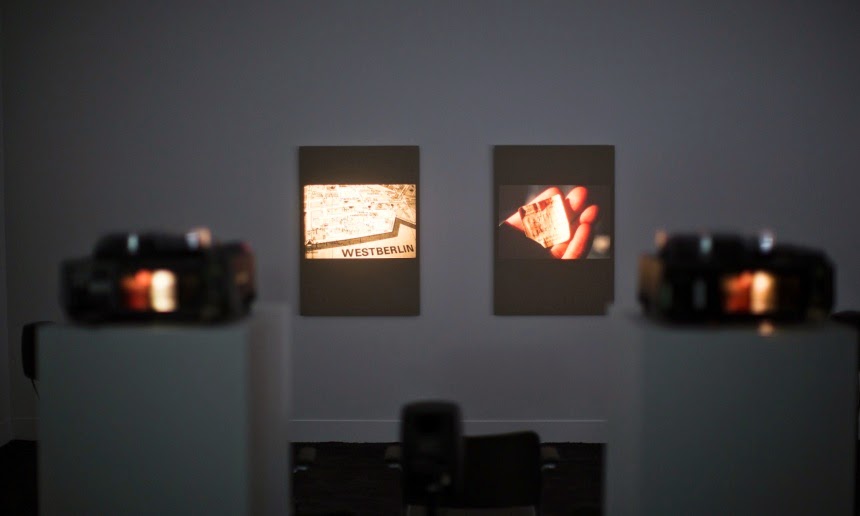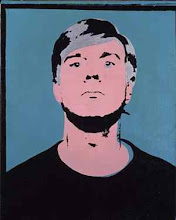 |
| Ciara Phillips, Things Shared, 2014 |
And this year? I did not know the work of any of this year's artists prior to their nomination (Duncan Campbell, Ciara Phillips, James Richards,Tris Vonna-Michell) but that merely confirms that my finger is no longer on the pulse of current British Art in the way that it used to be. Three of the four nominees work in film/video - it's not my favourite medium (not least because it can be so awkward and uncomforable to view in a gallery) but I have seen fantastic work. However, the signs are not good; or, rather, some of the reviews have not been good:
… peculiarly laboured and joyless… entirely vacuous… (Laura Cumming on James Richards and Ciara Phillips respectively); Waldemar Januszczak doesn’t mince his words: Whatever you do, do not go to see the 2014 Turner prize exhibition at Tate Britain. I repeat: go somewhere else. Even by Turner prize standards, this is an unusually awful show. And because it is so yawn-forcingly, heart-crushingly, buttock-clenchingly bad, there is the active danger that you might imagine all contemporary art this year was as grim as this. It wasn’t. So don’t go.
To be fair, JJ Charlesworth and Louisa Buck do find positive things to say, as does Jonathan Jones of two of the artists. Obviously, one should go and judge for oneself - however, with a fantastic array of shows currently in London (Kiefer at the RA, Polke at Tate Modern, Turner at Tate Britain, Constable at the V&A, Serra at Gagosian, Tuttle at the Whitechapel...) the competition is overwhelming!
Below are brief profiles of the artists drawn from the Tate website with links to short videos about them (click on their names).
The Turner Prize 2014 is at Tate Britain until 4 January 2015; Duncan Campbell was announced as the winner on 1 December 2014.
Read reviews by Laura Cumming, Waldemar Januszczak, J J Charlesworth, Jonathan Jones, Louisa Buck and a 'post-review' - review of the reviews by J.J. Charlesworth.
Duncan Campbell has been nominated for his contribution to Scotland’s pavilion at the Venice Biennale. Responding to Chris Marker and Alan Resnais’ 1953 film Statues Also Die, Campbell’s It for Others included new work by choreographer Michael Clark.
Campbell makes films about controversial figures such the Irish political activist Bernadette Devlin or the quixotic car manufacturer John DeLorean. By mixing archive footage and new material, he questions and challenges the documentary form.
 |
| Duncan Campbell, It for Others, 2013 |
Ciara Phillips has been
nominated for her solo exhibition at The Showroom, London.
Phillips
works with all kinds of prints: from screenprints and textiles to photos and
wall paintings. She often works collaboratively, transforming the gallery into
a workshop and involving other artists, designers and local community groups.
Phillips has taken inspiration from Corita Kent (1918–1986), a pioneering
artist, educator and activist who reinterpreted the advertising slogans and
imagery of 1960s consumer culture |
| Ciara Phillips, Things Shared, 2014 |
Richards weaves together his emotive films from a diverse range of found and original footage to explore the pleasure of the act of looking. Found VHS video and new imagery undergo varying levels of manipulation and repetition and, with an accompanying soundtrack, heighten the emotional and psychological range of the original. Born in 1983 in Cardiff, Richards was nominated for Rosebud, which includes close-ups of art books in a Tokyo library – the genitalia scratched out to comply with censorship laws.
 |
| James Richards, Rosebud |
Through fast-paced spoken word live performances and audio recordings Vonna-Michell (born Southend, 1982) tells circuitous and multilayered stories. Accompanied by a ‘visual script’ of slide projections, photocopies and other ephemera, his works are characterised by fragments of information, detours and dead ends.
 |
| Tris Vonna-Mitchell, Postscript (Berlin) |



No comments:
Post a Comment